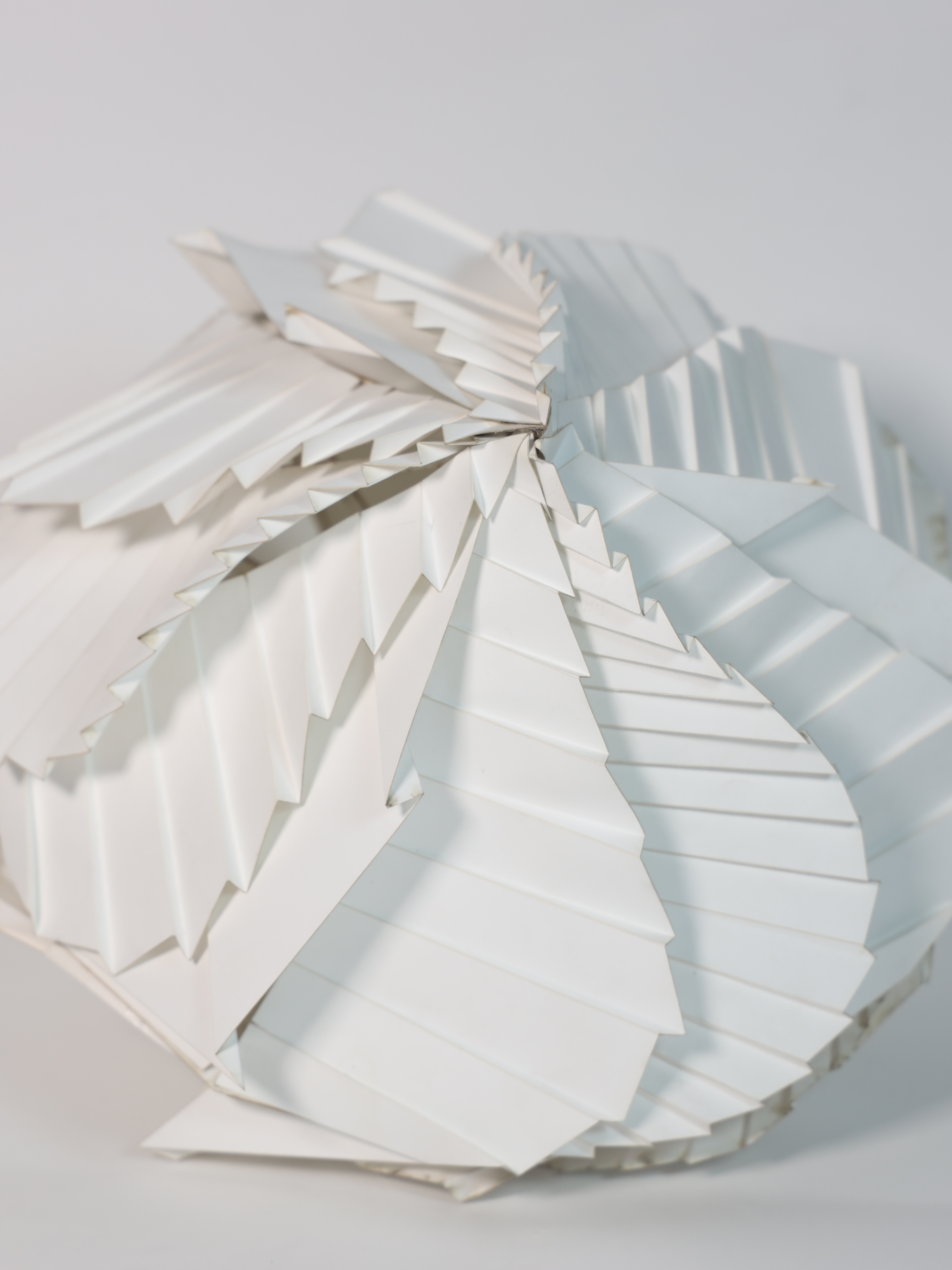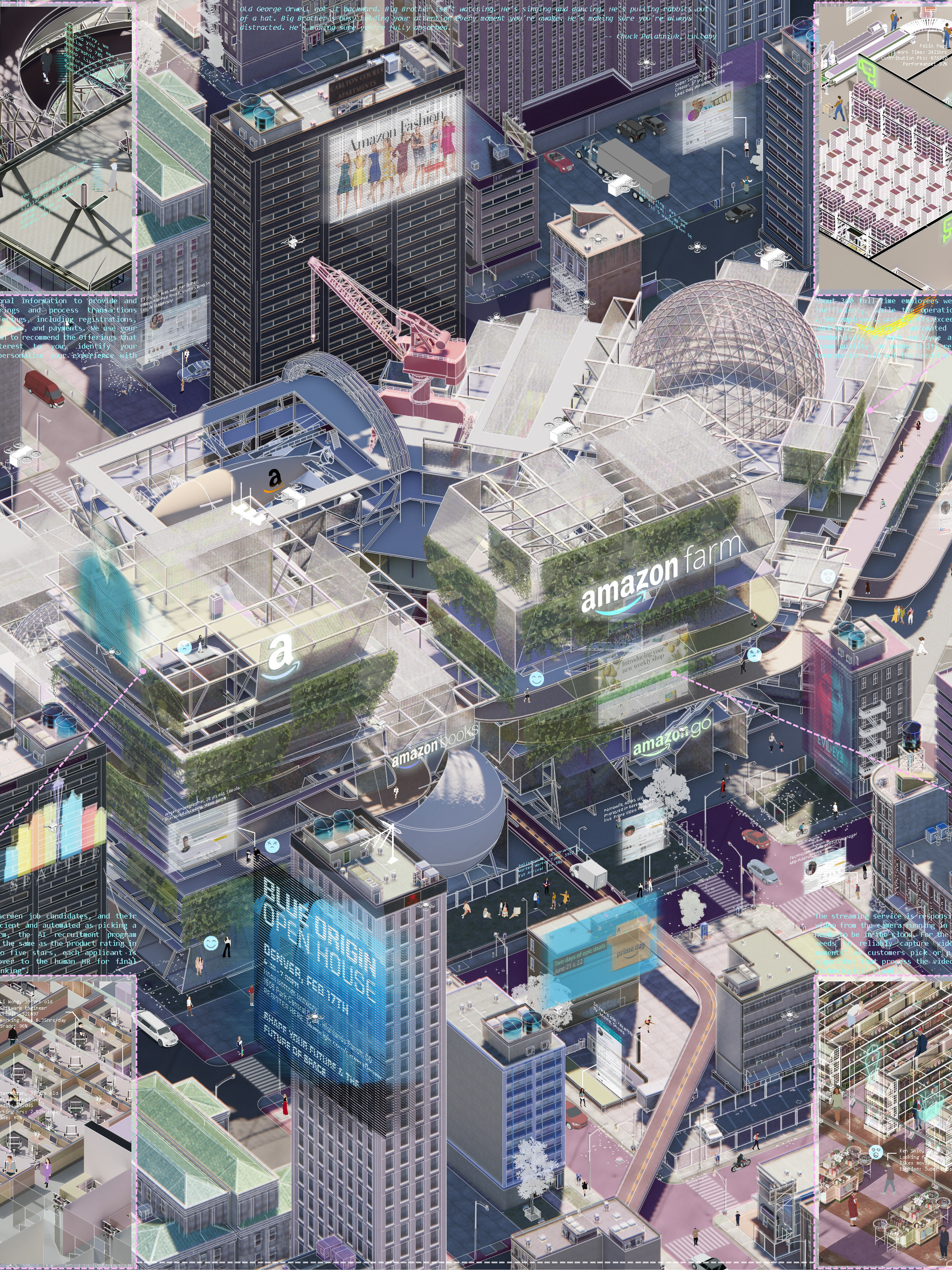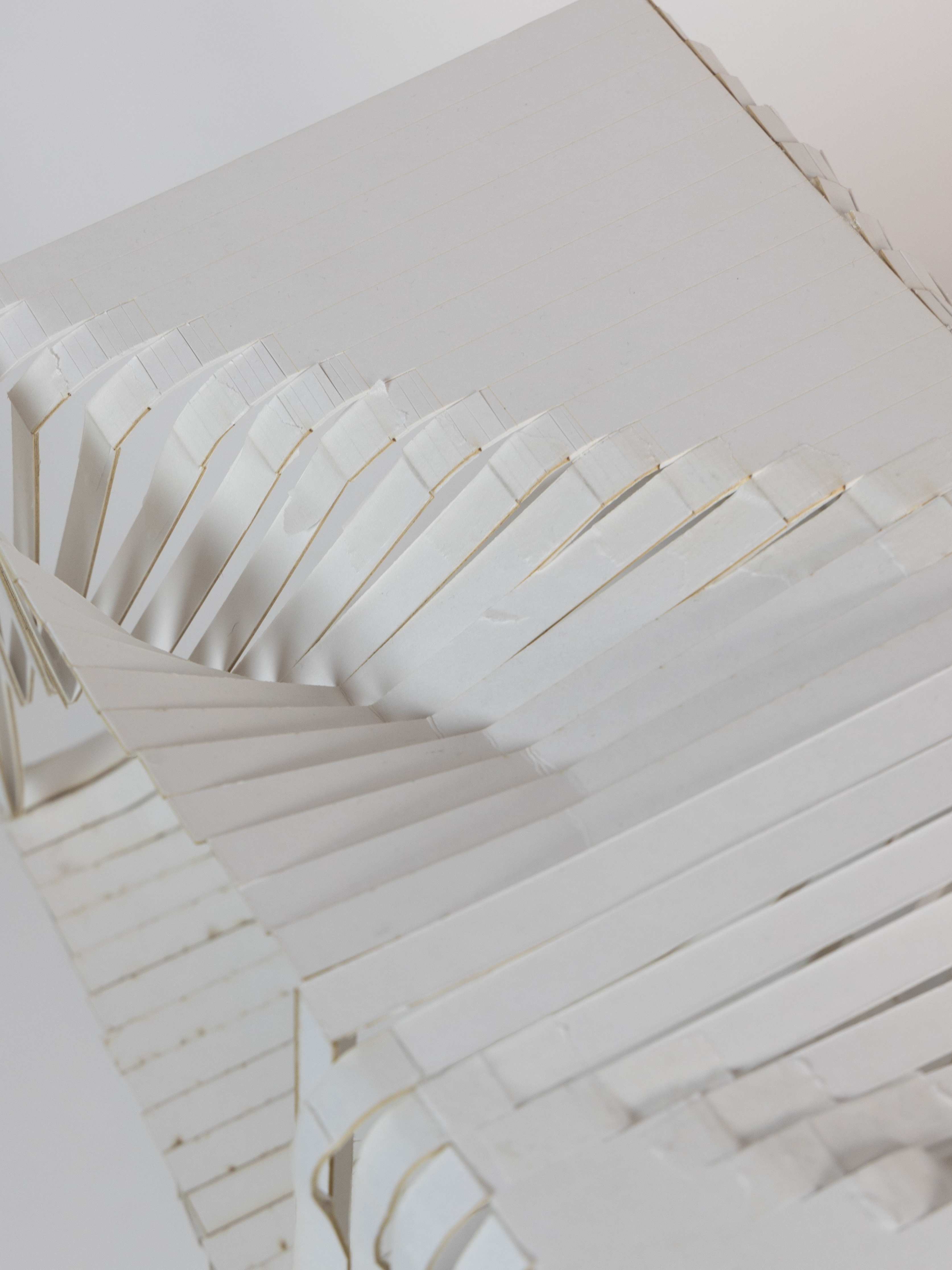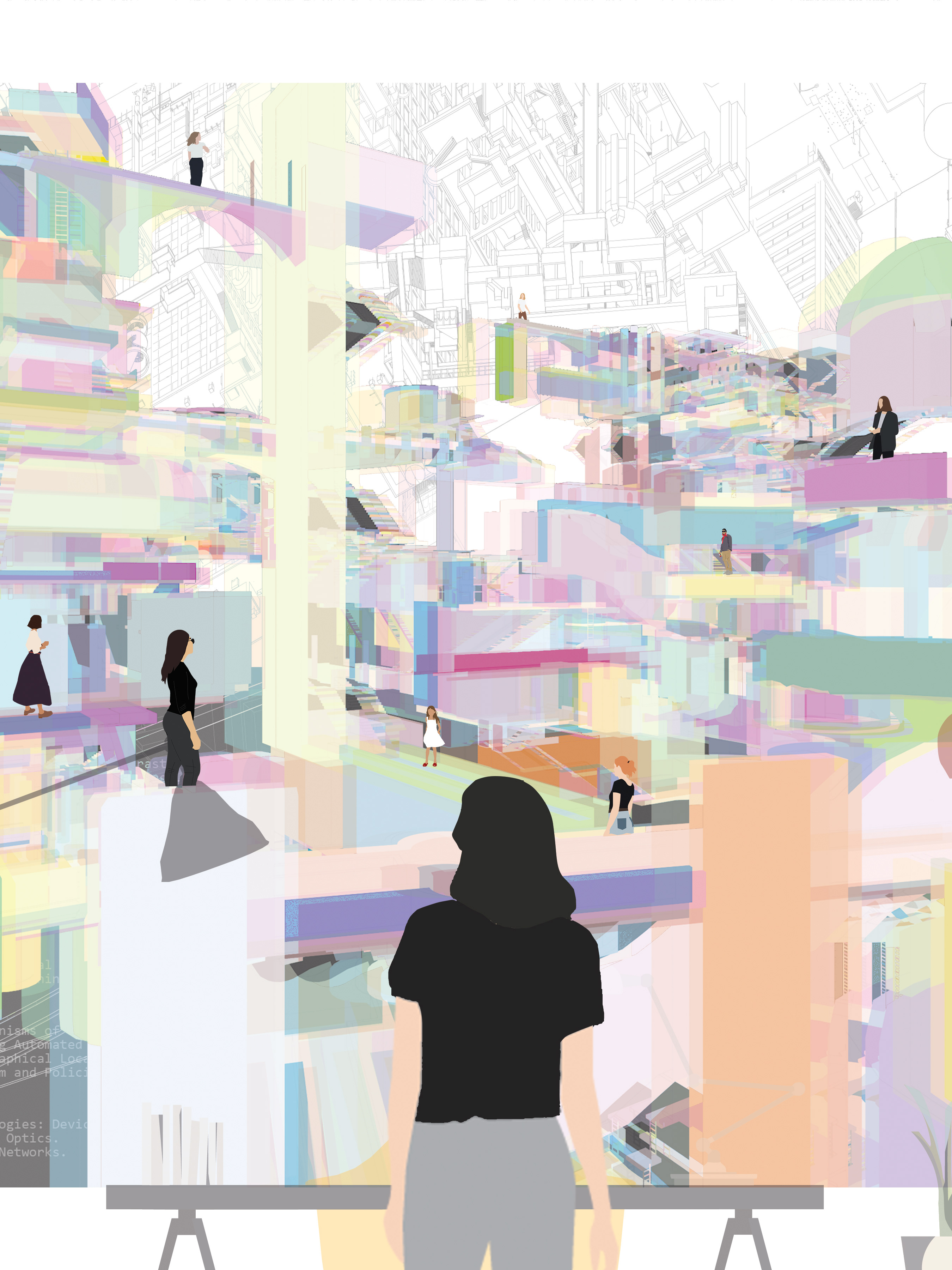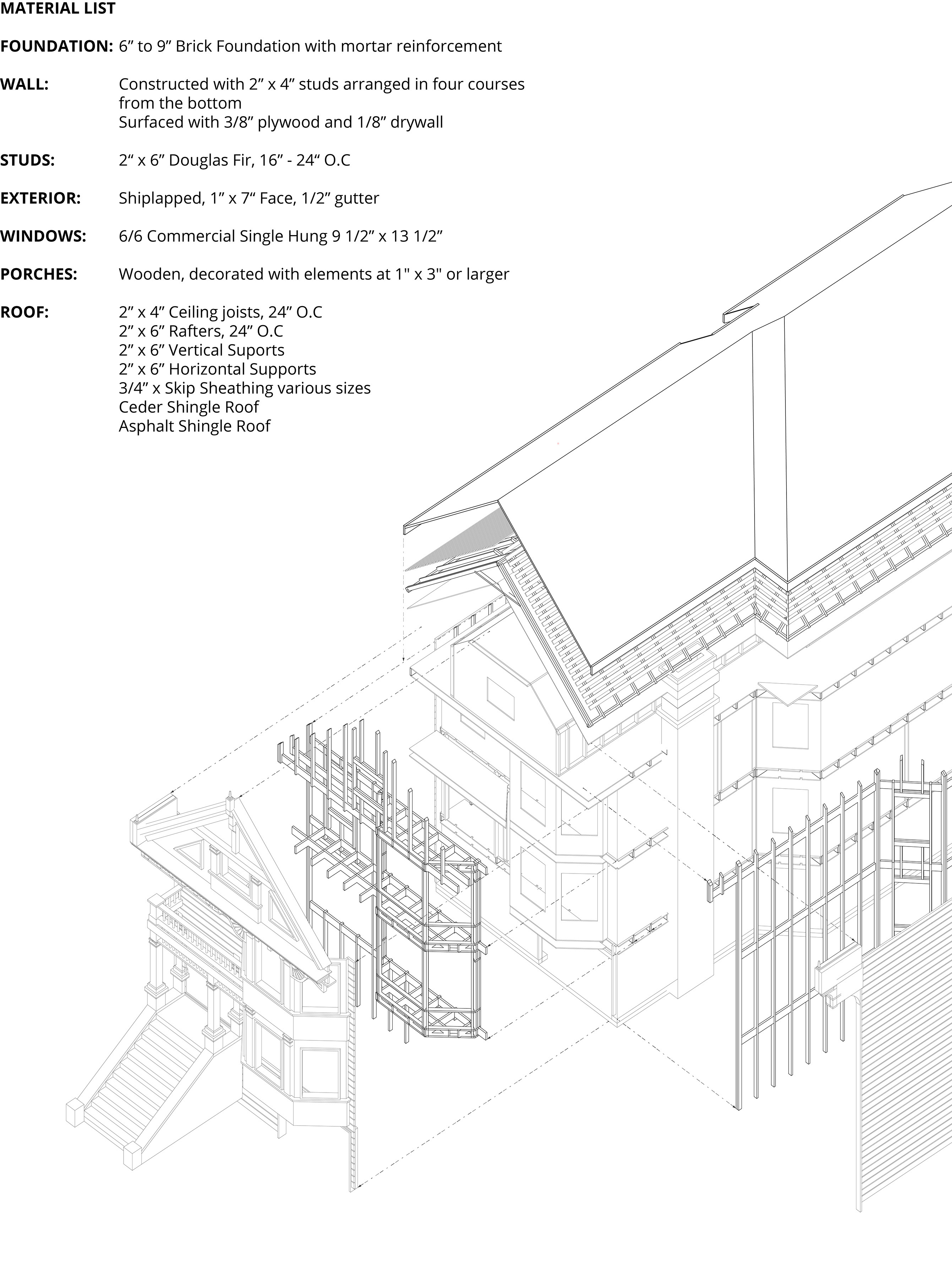2022 Fall Cornell University
Begin with the agriculture of corn, the idea of the corn into wall facilitated the activities around it. More importantly, a complete eco cycle of the producing, consuming, using, and disintegrating of the material. It coming from the field, and loop back to the field as degradable nutrition.
The accented and slanted of rectangular volume generated interstitial spaces. They are not isolated volumes, as it has opening for semi enclosed spaces. Volumes are going along the wall, which follows the topography of the land. Generated by multiple centers. Different programs laying out on the two major wings, one side being the habitable space, and another being the making workshop space. And a circular forum like space is being in the middle that could possibly serve as the library and ceremonial spaces. Housing units scattered along the outer edges as well as biodegradable little pavilions and storage spaces.
As the building engages activities that involves inter generations, it opens up opportunities for verbal communications and language nest. Knowledge being pass on. And it does not just end here. Because of its modular characteristics, it has the potential of being easily rebuild in the land of the Onondaga nations, and fully arranged by the people of the Onondaga. We hoped that it will serve as a seed for the future.
The concept of the project is about the community-self building process, which it invite local residents into the building process (cross generation communication). Therefore, we take on the idea of of incremental Building: unit prototypes for the elders that provide activity flexibility, and teenager volunteer to build houses. (interact with the elder; contrary of language nest)
The building process of the wall is also an activity that engage the whole community in to participating. Kids, elders, adult, each can join in the making or placing of the brick. The wall is not just separation of physical space, it is an medium that records history that people builds as a collective, a wampum belt that recorded the history as people lives and makes with it.
The end of a house does not mean the death of its life, as its materials are biodegradable and recyclable, it can be deconstructed and disintegrated into the field, give birth to new life of the corns. It reinforces the meaning of cycle of life, which echoes with the Onondaga’s traditional belief of spiritual energy within the nature.
Our initial studies of corn as building material reference directly from the scientific papers, with the idea of every part of the corn would be put into use.
The plan generation is reflective to the slope changes of the landscape, which indicated by the topography lines. Multiple centers are first pinned on the site, signifying different activity space centers. The walls would the follow along the circumference of these circles, in which they enclosed spaces with the circles so future construction can begin along the wall. The wall then extends to the south, and it will divide the land with different areas for the farm lands.
We also acknowledge that the Onondaga people would perform crop rotation. Crop rotation is the practice of planting different crops sequentially on the same plot of land to improve soil health, optimize nutrients in the soil, and combat pest and weed pressure. The principle of crop rotation is to plant a crop in a different location each year.
Therefore, our planning of the fields would have this capability of not only performing the farm rotation, but also have surplus areas for crops other than corns. (for example, the other two of the three sisters)
